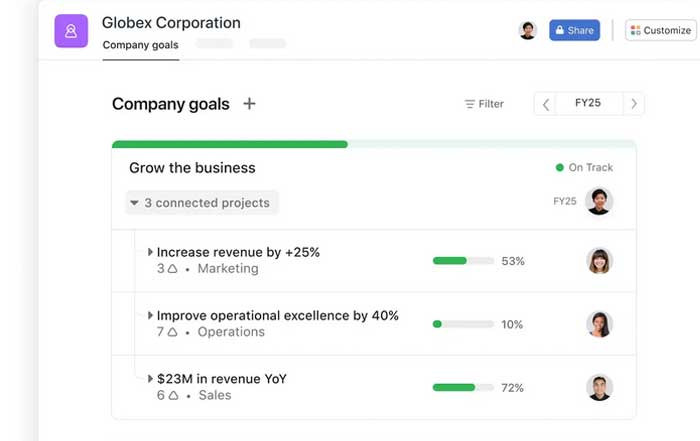Modern enterprises are discovering unprecedented opportunities to reshape collaboration by integrating artificial intelligence into remote project management. Organizations that once relied on traditional methods now embrace advanced solutions for improved coordination, enhanced decision-making, and more dynamic engagement among distributed team members. The transition to digital platforms in recent years has demanded proactive strategies to maintain productivity across borders and time zones. With AI-driven software, project managers have new capabilities to optimize tasks, forecast potential delays, and deliver real-time performance insights to stakeholders. This evolution has also changed the way leaders approach team motivation and resource allocation, making it vital to examine how AI can elevate every stage of remote work. By building a deeper understanding of AI’s potential, businesses can drive continuous improvement and strengthen operational resilience in a rapidly shifting competitive environment.
Sophisticated algorithms now support advanced scheduling features, risk mitigation plans, and seamless communication channels that adapt to each team’s unique workflow. Whether orchestrating product development, technology rollouts, or large-scale marketing initiatives, professionals are integrating AI to facilitate tasks, track progress more precisely, and provide accurate insights to senior leadership. These improvements reduce uncertainty, empower better decision-making, and enhance the visibility of how every aspect of a project interacts. While remote collaboration has been around for decades, the capacity to harness powerful AI technologies has taken virtual teamwork to higher levels of efficiency. Observers notice that crucial updates are delivered more quickly, milestones are met more predictably, and managers spend less time revising schedules because advanced systems handle much of the day-to-day adjustments automatically.
Organizations that have established mature remote work infrastructures now turn to automation and analytics to stay relevant and push boundaries in 2025’s competitive market. Project managers are tasked with aligning each team’s strengths with the right tasks, overseeing resource allocation, and reconciling stakeholder demands with technical realities. AI assistance can evaluate multiple metrics, including historical performance data, resource availability, and evolving business requirements. This makes it possible to craft holistic project plans that function as living documents, adaptable to real-time changes in conditions or constraints. Team members also find it less stressful to manage their responsibilities when they know automated tools are monitoring deadlines, distributing updates, and analyzing possible risks. When these systems integrate with leading communication platforms, it becomes even simpler to capture team feedback and maintain cohesion across different continents and time zones.
Companies in 2025 operate in a highly connected world, where advanced analytics can be accessed from smartphones and wearables, and even integrated into emerging technologies such as augmented reality and voice-activated assistants. Project managers can harness that connectivity to keep track of deliverables, oversee remote site activities, and generate timely reports for boards and investors. The next step of progress involves fostering an organizational culture that fully embraces AI not just as a tool for repetitive tasks, but as a strategic partner that augments human insight. Leaders must explore how best to integrate these systems without eroding the sense of teamwork and personal interaction that keeps remote teams invested. The challenge is to strike the right balance between automation and human judgment. By focusing on meaningful collaboration, clear communication, and sound policies that govern AI usage, businesses can extract lasting benefits from these emerging solutions.
Below, various aspects of how AI-driven project management supports remote teams are examined. The discussion highlights the evolving nature of virtual collaboration, the significance of data-driven insights for project success, and the human-AI connection that underpins productivity. Attention is also paid to potential obstacles in AI adoption and the possible future directions for enterprise-wide implementation. This analysis underscores that, while technology is important, leadership and culture remain the keystones of remote teamwork.
The Evolving Landscape of Remote Work
Distributed work arrangements have undergone a transformative journey over the past decade. What began as a method for specialized roles or international partnerships became a widespread practice across sectors. As broadband internet became more ubiquitous and digital tools more robust, companies found they could access talent from nearly anywhere, reducing real estate costs and adding flexibility to workforce arrangements. However, earlier iterations of remote work were frequently hampered by a lack of cohesive systems, resulting in fragmented communication and difficulties managing deadlines.
AI’s rise to prominence has intersected with this trend, introducing new capabilities for creating seamless virtual work environments. Machine learning models embedded in collaborative platforms can automatically categorize messages, direct key notifications to relevant stakeholders, and suggest next steps based on project statuses. These AI-driven functionalities also anticipate common questions from team members, enabling self-service documentation retrieval and alleviating the burden on project managers who would otherwise spend large chunks of time providing repetitive clarifications.
In 2025, many organizations have refined their remote work processes so thoroughly that remote employees operate at a similar level of productivity as their in-office peers once did. Virtual meetings, cloud-based storage solutions, and instant messaging platforms have become fundamental to corporate life. Project managers carefully coordinate tasks across multiple time zones, employing AI to reconcile differences in schedules and automatically propose suitable meeting windows or collaborative sprints. Tools that harness natural language processing can summarize online discussions, highlight unresolved issues, and reduce the hours spent reviewing chat logs. These capabilities streamline how leaders maintain oversight and reinforce accountability.
AI also promotes innovative ways of nurturing team culture in digital environments. Intelligent bots can facilitate casual interactions by recommending virtual coffee break sessions among colleagues who rarely interface, improving social cohesion. They can also track indicators of team well-being through sentiment analysis, prompting project managers to step in when communication becomes strained or when employees exhibit signs of disengagement. By making it easier to spot and address concerns, AI augments the manager’s ability to sustain morale and keep the team aligned with broader business objectives.
Remote collaboration is, in many respects, more agile and adaptive than traditional office-based routines, but also more vulnerable to communication gaps and time zone mismatches. AI technologies mitigate such challenges by proactively offering solutions, such as automated translation for multinational teams or context-aware updates that detect if a project is trending off track. This evolution represents a significant leap from the early days of scattered spreadsheets, disjointed video calls, and lost emails. Now, with virtual whiteboards, real-time shared documents, and sophisticated project management platforms, organizations see remote teams flourish under the guidance of AI-empowered leaders.
The Role of Project Managers in Remote Environments
Project managers serve as linchpins in connecting organizational strategy to day-to-day operations. In remote environments, their roles gain added complexity due to the distance between team members, as well as the broader range of cultural and time zone differences. Whereas traditional office settings allowed face-to-face problem-solving and spontaneous idea exchanges, modern managers rely heavily on digital channels to convey instructions and track progress. This shift demands greater intentionality in how leaders communicate, motivate, and measure outcomes. AI-driven solutions support these responsibilities by offering capabilities that make it simpler to coordinate tasks, monitor performance, and build relationships across dispersed locations.
Many of the tasks historically associated with project management—preparing schedules, allocating resources, drafting progress reports—can now be automated or significantly expedited through AI integration. Instead of manually examining calendars to identify free slots, project managers can rely on intelligent scheduling systems that quickly find overlapping availabilities and provide suggestions. Rather than sifting through large amounts of data to evaluate performance trends, managers can configure dashboards to visualize pertinent metrics in real time. These enhancements reduce administrative burden and free managers to focus on strategic thinking, risk mitigation, and stakeholder communication.
Project managers must also manage the human side of the process, ensuring that team members remain engaged, informed, and committed to achieving deliverables. While AI tools can streamline routine operations, the connection between individuals remains critical. Skilled managers leverage AI to gather detailed insight into employee performance patterns, but they must still interpret these patterns in context, addressing motivational issues that algorithms alone might not detect. This approach underscores the need for empathetic leadership and emotional intelligence, even as technology grows more sophisticated.
In remote settings, visibility can sometimes become a challenge. Without the informal interactions of a physical office, managers may not have direct insight into how employees are coping with workloads or collaborating with one another. AI counters this blind spot by measuring productivity signals, analyzing communication frequency, and identifying potential burnout risks. High-quality project management platforms with integrated AI can issue automatic notifications when tasks slip behind schedule, or when certain dependencies risk stalling the entire project. By presenting these insights, such platforms empower leaders to take timely remedial action, such as reassigning tasks or offering additional support to struggling team members.
In global enterprises, the project manager often becomes the primary link between senior executives and distributed teams. Summaries of project status, budget allocation, and risk factors feed decision-making at the highest levels. AI-driven analytics refine these summaries by detecting patterns, drawing correlations between project data and broader industry trends, and offering predictions of future challenges. Armed with these inputs, managers can act as strategic advisors who craft more informed solutions. Their role thus expands beyond supervision, evolving into a facilitation of data-driven insights that keep the company on track.
Because remote work is no longer a temporary arrangement but rather a standard practice in numerous sectors, organizations that elevate their project managers with AI support are often better prepared to compete in rapidly changing markets. These leaders become key to transforming daily operations into a well-coordinated machine, merging technology’s efficiencies with human adaptability and creativity.
AI-Driven Tools for Enhanced Collaboration
Technological innovation has produced a wide range of platforms and software designed to help teams coordinate their efforts across continents. From communication hubs to advanced project management systems, AI-driven solutions have raised the standard for what teams can accomplish outside traditional office settings. Tools now offer features such as automated task allocation, predictive timeline generation, and robust integration with popular cloud services, all with the aim of simplifying the project manager’s work. These platforms often rely on machine learning algorithms that analyze user behavior, project history, and organizational patterns, constantly refining their performance over time.
Many companies incorporate these solutions into existing technology stacks by connecting them with chat platforms, file-sharing repositories, and code management tools like GitHub. When integrated properly, AI can scan new commits to code repositories, identify tasks that need testing, and ping relevant engineers with requests for review. This eliminates manual follow-up, ensuring a smoother development pipeline. Similarly, design teams can benefit from AI that identifies out-of-date assets and provides alerts or updated guidelines to keep marketing collateral consistent.
Platforms featuring natural language processing capabilities transform written updates into actionable tasks without requiring team members to open multiple applications. Messages such as “The client needs an updated proposal by next Friday” can automatically trigger the creation of a relevant task, complete with a deadline and suggested assignees. This seamless approach eliminates redundant data entry and allows individuals to remain focused on higher-level strategic activities. AI chatbots often function as virtual project assistants, responding to routine queries about deadlines, budgets, or resource availability.
Project managers also gain significant advantages from specialized analytics dashboards that display real-time risk assessments. These dashboards commonly incorporate timeline data, resource usage patterns, and historical performance to identify bottlenecks before they escalate. As an example, if a crucial developer is consistently overbooked, the system can raise an alert, prompting managers to redistribute the workload. In scenarios where a project is trending behind schedule, AI may recommend adjusting deadlines or adding extra personnel. Such intuitive recommendations reduce guesswork and allow managers to base interventions on solid data.
Collaboration is further enriched through AI-backed meeting tools that provide live transcripts, highlight critical discussion points, and track follow-up actions. These features not only streamline the meeting process, but also minimize miscommunications by ensuring everyone has a clear record of commitments. Over time, these systems learn typical patterns within an organization’s meetings, refining their ability to organize and categorize information. Project managers can then quickly retrieve meeting highlights, align them with project milestones, and make sure that all decisions are adequately documented.
Several of the most renowned project management software providers have gone beyond offering simple scheduling and file storage features. Solutions offered by platforms like Asana utilize AI to visualize workloads, track timelines, and display progress in ways that promote clarity and accountability. By marrying these capabilities with robust communication tools, the era of endless email threads and unclear responsibilities fades away. The result is a more fluid work environment, where every team member understands objectives, timelines, and dependencies. Project managers, meanwhile, find themselves better equipped to resolve issues swiftly and maintain alignment across various tasks.
Data Analytics and Predictive Insights for Project Success
Project success hinges on timely access to accurate, relevant information. Many organizations accumulate massive amounts of data related to project planning, resource utilization, and team performance. AI allows project managers to analyze these datasets more effectively by identifying trends, extracting insights, and forecasting potential pitfalls. Predictive analytics, enabled through machine learning techniques, help anticipate delays, budget overruns, and other roadblocks that can derail projects. This approach transforms data from a static repository into a dynamic element of the decision-making process.
Predictive analytics tools scan historical project information to understand patterns of success and failure. They factor in elements such as industry norms, project scope, and the track record of individual contributors. If a particular developer often finishes tasks early, the system weights that factor in timeline predictions. Conversely, if certain tasks routinely see scope creep, AI can provide an earlier heads-up when new requests appear to be repeating that cycle. These nuanced insights add depth to the typical Gantt chart or Kanban board, guiding managers on where to allocate resources or who might require additional support.
Data-driven decision-making fosters a culture of accountability. When combined with transparent reporting, everyone in the organization can see how certain metrics correlate with the project’s progress. This openness eliminates confusion about the rationale behind management decisions, making the reasoning visible to all. Even in a remote environment, teams become more cohesive as they share a clear understanding of how project targets and risk factors are determined.
Individual performance metrics also benefit from AI’s analytical capabilities. By examining productivity indicators, organizations can detect patterns of excellence and areas that need improvement. Some advanced systems integrate natural language understanding to gauge the tone and sentiment of communication channels, which can offer valuable clues about team morale. A flurry of stressed or urgent messages over a short period may suggest that the team is overextended, prompting the project manager to investigate or reassign tasks before morale declines.
Predictive modeling extends beyond the immediate project scope to consider external variables like competitor moves or shifting market conditions. Managers who keep an eye on macro-trends are more likely to steer their projects effectively when sudden disruptions occur. While it is not always possible to anticipate every complication, AI-based tools significantly reduce the element of surprise by providing early warning signals. With that advantage, project managers can pivot quickly, demonstrating agility in remote teams that need to accommodate changes without the safety net of a traditional office setting.
Organizations in 2025 typically invest in robust data security and governance frameworks to ensure sensitive information is protected. Project managers must have the appropriate protocols in place, so data analytics can be carried out responsibly. By adhering to secure practices, managers can harness the full power of predictive insights without compromising privacy or exposing critical proprietary data. The careful blending of data analytics with project management strategy ensures that AI is not just about enhanced efficiency but also about fostering trust and reliability in business processes.
The Human-AI Connection: Fostering Team Engagement
While AI brings powerful advantages to remote teams, managers must remain vigilant about preserving the sense of human connection. A purely technology-driven approach risks overshadowing the need for empathy, mentorship, and personal growth. AI can facilitate routine tasks, analyze massive data sets, and offer targeted recommendations, but project managers are responsible for ensuring the emotional and social components of team collaboration remain strong. Clear objectives and deadlines lose their impact without a supportive environment that encourages engagement and shared purpose.
One effective strategy is to balance the delegation of repetitive duties with opportunities for creative collaboration and professional development. Automated project monitoring allows team members to invest more energy into strategic tasks, but it is important for managers to foster a culture where employees feel comfortable sharing ideas and proposing innovations. In a remote setup, AI tools can organize brainstorming sessions by matching participants with complementary skill sets or providing relevant materials based on historical project data. This approach combines the best of human imagination with the system’s capacity for quick information retrieval.
Team-building in remote environments benefits from AI-driven solutions that track patterns in communication frequency, message sentiment, and collaboration efficacy. When the data suggests declining engagement—perhaps due to limited direct interaction—managers can consider implementing strategies such as virtual off-site events or cross-functional team challenges that stimulate interactions. The goal is to form an environment where employees see technology as a catalyst for building stronger personal connections, rather than a barrier that separates them behind screens.
AI can also enhance the feedback loop between managers and remote workers. Traditionally, feedback might be delivered infrequently, leaving employees unsure of their standing until a formal review. Now, continuous performance tracking allows for micro-feedback on work deliverables, communication habits, and overall responsiveness. A well-designed AI platform can consolidate these observations into digestible summaries, highlighting positive contributions and offering suggestions for improvement. The feedback process then becomes more transparent, frequent, and ultimately fair.
Even recruitment and onboarding in 2025 benefit from AI integration. New remote hires quickly gain access to project documentation, interactive tutorials, and relevant resources based on job roles and skill sets. AI-driven knowledge bases answer routine questions, while chatbots can guide newcomers through onboarding workflows. This keeps the initial learning curve manageable and fosters a sense of competence from the start. Project managers who oversee these processes experience fewer disruptions, ensuring that the entire team can focus on strategic objectives without sacrificing support for new members.
By blending advanced AI tools with supportive leadership practices, organizations create remote teams that are both high-performing and deeply connected. The human-AI connection emerges as a dynamic partnership: technology addresses logistical challenges, while leaders nurture the vision and interpersonal dynamics that keep teams motivated. In this balanced approach, efficiency and empathy coexist, allowing remote teams to thrive and innovate sustainably.
Overcoming Challenges in AI Implementation
Despite the evident advantages, integrating AI into remote project management is not without complications. Organizations might face internal resistance from employees concerned about job displacement or worried about the complexity of adapting to new tools. Stakeholders can be skeptical of data privacy safeguards, especially if sensitive project details or personal information pass through AI-driven systems. Each challenge must be addressed thoughtfully to ensure that AI adoption fuels positive, long-lasting transformations rather than short-lived disruptions.
A primary barrier is often the learning curve associated with sophisticated AI software. Project managers may appreciate the potential efficiency gains but find it daunting to master an entire suite of analytics dashboards, predictive modeling features, and automated workflows. It becomes essential for companies to invest in comprehensive training programs, one-on-one coaching, and accessible support channels that facilitate skill development. By focusing on knowledge transfer and user-friendly design, organizations minimize frustration and help employees realize the tangible benefits of AI faster.
Data integrity presents another hurdle. If the quality of the data fed into AI systems is poor—whether incomplete, outdated, or inconsistent—then the subsequent predictions and recommendations will be flawed. This issue grows more critical in remote contexts, where multiple teams feed information into shared platforms from various locations. Data governance protocols should define how information is entered, validated, and updated, so that analytics remain reliable. Managers may set guidelines for frequency of updates, naming conventions, and best practices for data categorization, ensuring the AI has the most accurate picture of the project’s status.
Concerns about transparency also arise, particularly when AI models operate like “black boxes” that deliver decisions or forecasts without clear explanations. Project managers might find it difficult to trust or justify the system’s suggestions if they cannot see the reasoning behind them. This can lead to missed opportunities or friction with stakeholders who question the reliability of machine-generated insights. To address these concerns, many providers are developing explainable AI features that describe how algorithms arrive at their conclusions. Managers can then relay that clarity to their teams, reinforcing confidence in technology-driven processes.
The matter of cybersecurity cannot be overlooked. AI platforms, which often link various organizational systems, can become attractive targets for cyber criminals. Remote work setups introduce additional vulnerabilities, as employees connect from multiple networks, sometimes on personal devices. Proper encryption, multi-factor authentication, and continuous monitoring are essential security measures. Periodic audits of AI tools also ensure that newly discovered threats are neutralized promptly. By staying up to date on best practices, project managers and IT specialists can build robust defenses around sensitive data and critical infrastructure.
Cultural acceptance is another aspect requiring attention. Not all team members feel comfortable letting AI bots schedule meetings or provide performance metrics. Some might perceive these applications as intrusive or impersonal. Managers, therefore, have a responsibility to communicate the purpose and advantages of AI adoption, highlighting how it relieves the burden of repetitive tasks and opens up new opportunities for creativity and professional growth. Involving teams in the decision-making process—encouraging feedback, suggestions, and even pilot testing—can foster a sense of ownership and mitigate resistance.
By actively working to address these challenges, organizations develop robust strategies for AI integration that resonate across departments. Ultimately, the results often justify the effort: better decision-making, streamlined workflows, and more agile responses to an evolving business landscape.
AI Tool Selector for Remote Project Management
Navigate through options to find recommended AI solutions for your team.
What's your primary challenge?
Future Potential and Emerging Trends
Emerging developments in AI point toward a future where remote project management becomes even more seamless, proactive, and personalized. Growing interest in augmented reality (AR) and virtual reality (VR) for collaboration may merge with AI, enabling immersive team experiences that transcend distance. Project managers might guide teams through virtual project sites, offering real-time annotations powered by AI object recognition. These immersive environments could help replicate the immediacy and spontaneity of in-person interactions while retaining the flexibility of remote work.
Sophisticated semantic understanding of documents, communications, and recorded meetings will make it possible for AI to summarize long discussions, highlight areas of disagreement, and propose compromise solutions. This capability would save hours of manual review, allowing managers to quickly identify the crux of issues and mediate them effectively. As natural language processing matures, AI-driven bots will communicate in ways that feel more human, reducing any friction that might come with automated assistance. Instead of standard text responses, they could employ user-specific vocabulary, learn preferred communication styles, and adapt to each individual’s pace.
In addition, generative AI models are poised to have a growing influence on how project tasks are handled, from producing first drafts of designs or documents to simulating the impact of different resource allocations in real time. These models will provide multiple scenarios, enabling project managers to compare potential outcomes and choose an optimal course of action. The ability to create virtual prototypes rapidly without manual coding or lengthy design processes will accelerate proof-of-concept phases, particularly in fields like product development, software engineering, and creative media.
AI ethics and regulatory compliance will continue to be a focal point, especially for global organizations managing remote teams spread across multiple jurisdictions. New guidelines are expected to define acceptable uses of AI in employee monitoring, data collection, and decision-making. Project managers, together with compliance officers, must stay informed about these regulations, ensuring that technology deployments align with local laws and respect human rights. In some cases, this may involve customizing AI implementations to suit the cultural and legal contexts of each region in which the organization operates.
Quantum computing—though still in relatively early stages—could vastly enhance AI’s processing power. Predictions and simulations that currently take hours or days to run might be completed in seconds or minutes. Such leaps would further magnify the accuracy and speed of project planning, resource optimization, and risk detection. While quantum computing remains on the horizon, forward-thinking enterprises are already preparing to leverage it once it matures, establishing flexible infrastructure that can accommodate next-generation computational approaches.
In the midst of these transformations, the fundamental question remains: how to preserve the human component of project management while capitalizing on AI’s vast potential? The most successful organizations in 2025 and beyond will be those that integrate ethical, empathetic leadership into every stage of AI implementation. Thoughtful governance, continual engagement, and a commitment to lifelong learning will ensure that AI serves as a powerful ally, rather than a source of disconnection.
Conclusion
Organizations that adopt a balanced approach to AI in remote project management gain a decisive edge in productivity, innovation, and adaptability. The technologies available today far surpass the tools of a decade ago, offering real-time insights, automation capabilities, and predictive analytics that ensure projects stay on course. By reducing the time spent on mundane tasks, AI frees project managers to focus on leadership, strategy, and the nuanced art of team cohesion.
The maturity of remote work processes in 2025 gives businesses the chance to reimagine collaboration on a global scale. Teams that once struggled with miscommunication and scheduling dilemmas now flourish under AI-assisted coordination, where tasks are clearly outlined, potential pitfalls are flagged early, and stakeholders receive concise performance updates. The best outcomes arise when technology and human acumen operate in harmony, with project managers acting as catalysts for innovation while AI handles data-intensive operations.
There are, of course, hurdles in implementing AI, such as overcoming cultural resistance, ensuring data accuracy, and adhering to stringent security standards. Yet these obstacles become manageable with dedicated leadership, clear communication strategies, and careful planning. Each successful implementation reinforces the value of harnessing AI, demonstrating that well-informed, methodical approaches can yield significant gains in efficiency, project quality, and workforce satisfaction.
The role of AI in remote project management will only grow more prominent as emerging technologies like AR, VR, generative models, and quantum computing further reshape the boundaries of virtual collaboration. Project managers who stay attuned to these advancements and lead their teams with empathy, openness, and clarity will be positioned to unlock new levels of productivity. AI can already suggest optimal schedules, identify risks with pinpoint accuracy, and detect subtle trends in communication. As these capabilities expand, the possibilities for innovation broaden—making it an exciting time for any organization seeking to maximize performance in a decentralized setting.
To discover more about AI-powered project management and broader tech developments, reputable sources such as TechCrunch, OpenAI, and Project Management Institute provide continuous updates and forward-thinking perspectives. These platforms shed light on how organizations across various industries harness next-generation tools, offering insights that help project managers adapt to ongoing changes. The most effective managers remain curious, eager to learn, and steadfast in championing ethical, people-oriented deployment of cutting-edge technologies.
Observing the synergy of AI-driven insights with human expertise reveals a future in which remote teams act as cohesive units, bridging physical distances with powerful, intuitive platforms that streamline every phase of a project’s lifecycle. Productivity gains, cost savings, and a supportive workplace culture become more attainable, reflecting how modern businesses can thrive in today’s competitive global marketplace. As AI continues to evolve, those who adopt a balanced, thoughtful, and ethically grounded approach to integrating these tools will be best equipped to excel. Collaboration will become more inclusive, decision-making more accurate, and the day-to-day tasks of project management more strategic—ushering in an era where remote work emerges as a defining hallmark of an organization’s success.










